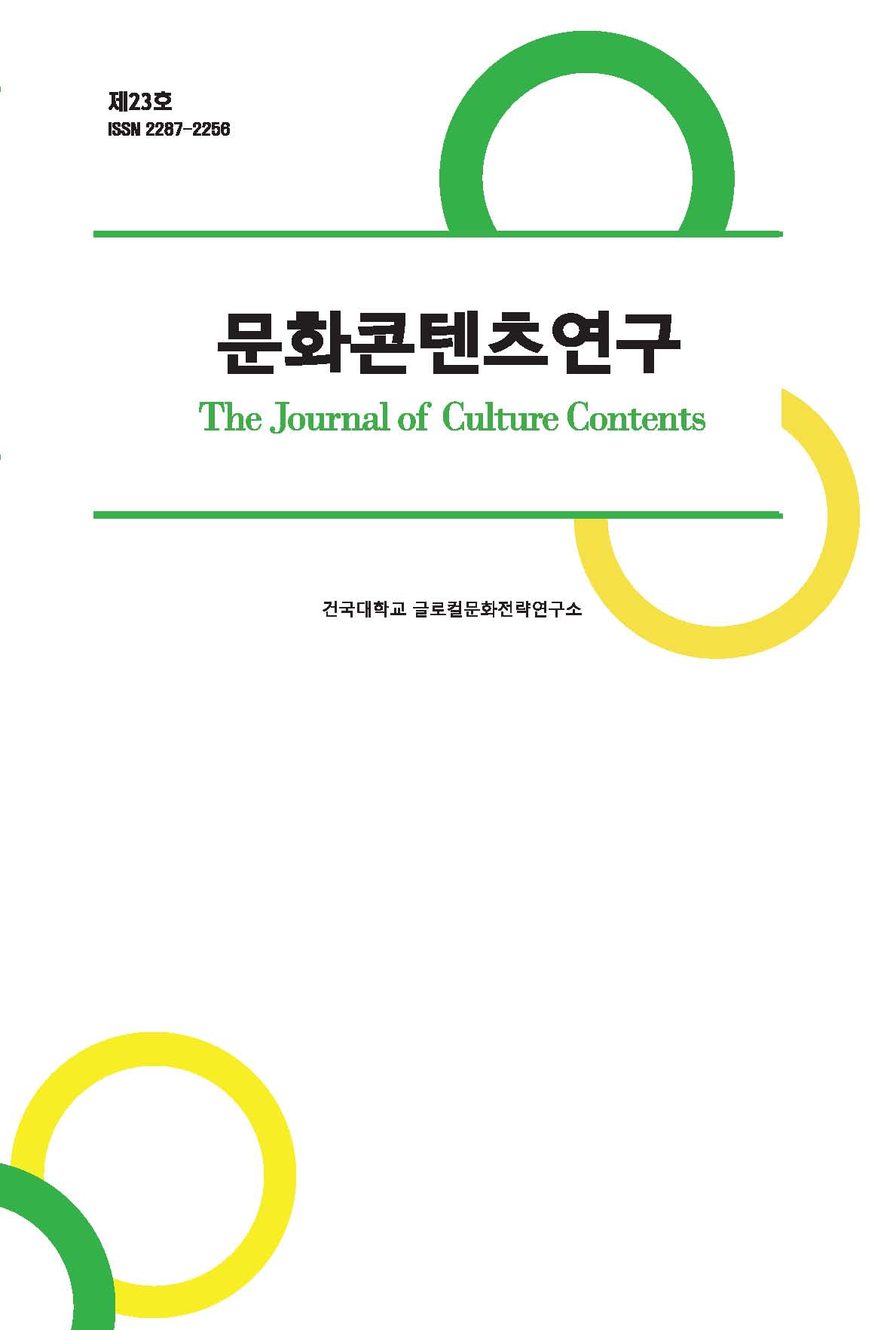Research Article
Abstract
References
Information
Although art education is still in today’s general elective curriculum, it is difficult to sustain a curriculum due to its educational effectiveness. Art appreciation through aesthetic visual training is important for the general public and value and acceptance to vary depending on how people appreciate it. Art appreciation in art education has been designed based on theory and there are aspects to force the teacher’s viewpoint rather than students. This paper deals with the case applied pragmatic and effective appreciation method based on the concept of ‘experience’ by John Dewey in order to improve art education circumstances and to be reborn as a better subject. The aim of this study was to know the effectiveness of the empirical approach to art appreciation and to suggest the usefulness of art education in the general elective curriculum.
This study conducted in-depth interviews with 6 non-art major students from the < Art Theory and Appreciation> class which is a general elective subject at university, and all students were observed by using the ‘Covert Observation’ method. The research data were analyzed based on Giorgi’s phenomenological research method, and the result of the study was 43 meaning units, 7 derived topics, 4 essential topics. The effectiveness of the empirical approach on art appreciations are : first, it showed that students have better attitudes toward art. Art, which became familiar through the drawing process, improved student’s attitudes at the class. Second, the level of understanding improved due to the formation of sympathy between artists and students(audiences), and students wanted to use the method for appreciating artwork consistently. Third, the increased confidence has a positive effect on art appreciation and at the same time, this effect is being led to the exploration of other art disciplines. This study found out that the empirical approach was remarkably highly effective in art appreciation education.
현대 교양 교과에서 미술교육은 시행하고 있지만, 교육적 효과성 문제로 인하여 지속적 운영에 어려움이 있다. 미술교육의 가장 큰 특징은 미적인 시각을 훈련하는 것이다. 미적인 시각훈련을 통한 미술감상은 감상 경험이 적은 미술비전공자 측면에서 보다 중요하며 어떻게 감상을 하냐에 따라서 가치성과 수용성이 달라진다. 미술교육에서 감상영역은 이론 중심으로 설계되고 수용자인 학생의 입장에서 보다는 교수자의 입장이 강요되는 측면이 있었다. 본 논문은 이러한 상황을 개선하고 보다 좋은 교과로서 거듭나기 위해 존 듀이의 ‘경험(Experience)’ 개념에 기초하여 만든 실용적이고 효과적인 경험적 접근 감상 방법을 적용한 사례를 다룬 것으로 경험적 접근 감상법의 효과를 알아보고 교양교육으로서 미술교육의 유용성을 제시하는 것에 목적이 있다.
본 연구는 대학교 교양과목인 <미술의 이론과 감상> 수업 수강생 중 미술 비전공학생 6명을 대상으로 심층인터뷰를 진행하였으며 전체 학생들을 수업 시간 중 은밀한 관찰(Covert Observation) 방법을 통해 관찰하였다. 연구자료는 Giorgi의 현상학적 방법론을 바탕으로 분석되었으며 연구 결과는 의미단위 43개, 드러난 주제 7개, 본질적 주제가 4개로 나타났다. 경험적 접근 감상방법의 효과성으로는 첫째 미술을 대하는 자세가 좋아진 것을 확인할 수 있었다. 그리기 과정을 통해 친숙해진 미술은 다시 수업 태도의 집중도를 향상시켰다. 둘째, 공감대 형성으로 인해 미술작품에 대한 이해도가 올라갔으며 학생들은 지속해서 그리기 감상방법을 활용하기를 원했다. 셋째, 미술에 대한 자신감이 생겨 감상에도 긍정적인 영향을 주었으며 동시에 작품과 연계된 다른 학문에 대한 탐구로까지 연계되는 효과를 확인했다. 본 연구는 연구 결과를 통해 미술 감상교육에서 경험적 접근 방법이 상당히 효과가 높게 나타난다는 것을 알 수 있었다.
- 고충환, 「[2000자로 쓴 현대미술사조6/입체주의] 사물의 본질에 대한 기하학적 환원」, 『미술세계』, 2000.
- 국어대사전편찬협회, 『국어대사전』, 민중서관, 1992.
- 김성숙·김정희·김형숙·김혜숙·안금희·이성도·이주연·정여주·황연주, 『미술교육과 문화』, 학지사, 2007.
- 김영천·정상원, 『질적연구방법론Ⅴ : Data Analysis』, 아카데미프레스, 2017.
- 김윤정·고정민, 「청소년의 문화예술활동이 학업성적에 미치는 영향」, 『청소년학연구』, 제22권(제5호), 한국청소년학회, 2015.
- 김지현, 「학제적 교양교과과정의 특징과 의의 : 하버드 대학 ‘새 교양교육(New General Education)’을 중심으로」, 『교양교육연구회』, 제8권(제3호), 한국교양교육학회, 2014.
- 노관범, 「대학교육과정 분석을 통한 미적소양교육의 재개념화」, 『인문정책연구총서』, 경제·인문사회연구회, 2010.
- 류지영·이은적·안혜리·이주연·김선아, 『미술교육의 기초』, 교육화학사, 2016.
- 유기웅·정종원·김영석·김한별, 『질적 연구방법의 이해』, 박영스토리, 2018.
- 이성흠·윤옥한, 「교양교육 강좌성격에 따른 융복합교육을 위한 수업지원체제 모형의 탐색」, 『교양교육연구회』 제8권(제2호), 한국교양교육학회, 2014.
- 박휘락, 『미술감상과 미술비평 교육』, 시공아트, 2003.
- Anne Bamford, (The Wow Factor : Global research compendium on the impact of the arts in education), 백령, 예술이 교육에 미치는 놀라운 효과, 한길아트, 2007.
- Laurie Schneider Adams, (The Methodologies of Art), 박은영, 미술사방법론, 서울하우스, 2009.
- Mikel Dufrenne, (Phénoménologie de L’expérience Esthétique), 김채현, 미적 체험의 현상학(상), 1991.
- Nicolai Hartmann, (Ästhetik), 전원배, 미학, 을유문화사, 1995.
- Rudolf Arnheim, (Visual Thinking), 김정오, 시각적 사고, 이화여자대학교출판부, 2004.
- Aristotle, The Basic Works of Aristotle, Richard McKEON, ed, New York, Random House, 1941.
- Dennis L. Sepper, “Understanding Imagination : The Reason of Images”, Studies in History and Philosophy of Science Vol33, Springer, 2013. 10.1007/978-94-007-6507-8
- Harold Osbome, The Art of Appreciation, New York: Oxford University Press, 1970.
- John Dewey, Art as Experience, Perigee, New York, 1980.
- John Dewey, Experience and Nature, Dover Publications, 2000.
- Lincoln J. Fry, “Participant Observation and Program Evaluation”, Journal of Health and Social Behavior Vol 14, American Sociological Association, 1973. 10.2307/2137119 4754424
- Linda Finlay, “Debating Phenomenological Research Methods”, Hermeneutic Phenomenology in Education, Sense Publisher, 2012. 10.1007/978-94-6091-834-6_2
- Marcia Muelder Eaton, Basic in Aesthetics, Belmont:Wadsworth, 1988.
- Richard Lachapelle, Manon Doiesnard, Emily Keenlyside, “Investigating Assumptions about the Relationship between Viewing Duration and Better Art Appreciations”, Studies in Art Education 50(3), National Art Education Association, 2009. 10.1080/00393541.2009.11518771
- Tone Saugstad, “The Importance of Being Experienced: An Aristotelian Perspective on Experience and Experience-Based Learning”, Studies in Philosophy and Education 32, Springer Science+Business Media Dordecht, 2013. 10.1007/s11217-012-9329-0
- Victor Yelverton Haines, “Appreciating Art Appreciation”, The Journal of Value Inquiry Vol34, Kluwer Academic Publishers, 2000.
- Vincent Lanier, The Visual Arts and the Elementary Child, New York: Teachers College Press, 1983.
- Publisher :Research Institute of Creative Contents
- Publisher(Ko) :글로컬문화전략연구소
- Journal Title :The Journal of Culture Contents
- Journal Title(Ko) :문화콘텐츠연구
- Volume : 20
- No :0
- Pages :213-241
- DOI :https://doi.org/10.34227/tjocc.2020..20.213



 The Journal of Culture Contents
The Journal of Culture Contents





